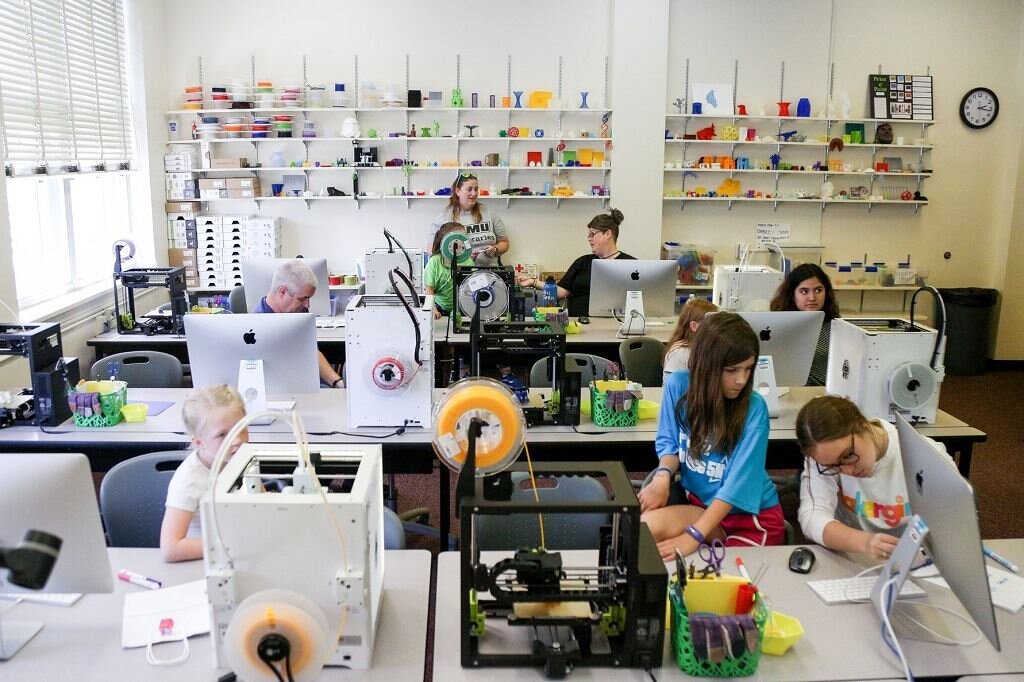The 2020 global health crisis evoked a fair number of changes in our lives—both in the private and professional spheres.
The sudden pandemic kick-off encouraged entrepreneurs to rethink possibilities in many industries. As the pandemic hit and the world was running out of protective gear, makers with 3D printers around the world united to save the caretakers by 3D printing face shields. Ap, Vulkaza CEO, played one of the key roles in the Norwegian 3D-printing community that has delivered over 45 000 reusable face shields to the hospitals, the police, and almost every nursing home in Norway.
In this case, 3D printing started as a crisis response, and for Vulkaza, the idea of uniting makers into a distributed manufacturing network has quickly grown into a solution that has the power to change the world for the better.
3D printing can be a real source of optimism when it comes to sustainability. We believe that 3D printing on-demand, where things are produced where and when they are needed, is the most sustainable method of manufacturing.
So, let's have a look at three key reasons why 3D printing on-demand is the most sustainable method of production.
No overproduction — much less waste
Probably the biggest contribution of 3D printing to sustainability is on-demand manufacturing where no products are made before they are needed.
Millions and millions of unsold items are destroyed by Amazon each year. Waste from fashion alone can fill a harbor of Sydney annually. So, we are damaging the environment in two ways – first using resources to produce things and then causing huge environmental impacts by getting rid of overproduction. Urgent action is required to change how things are made in the world.
With on-demand manufacturing, things are only produced after they are purchased. In addition to reducing resources required and eliminating the need to destroy overproduction, this brings multiple other benefits to businesses. First, without stock businesses don’t need warehousing which in itself is a huge saving. Second, paying for production after a customer has bought an item frees up capital. Finally, no-waste means savings and a positive impact on the environment.
But how do we guarantee timely delivery and scale with on-demand manufacturing?
3D printing next to your customers
Maritime transport alone emits around 940 million tons of CO2 annually and is responsible for about 2.5% of global greenhouse gas (GHG) emissions. That is not to mention the oil and waste that goes into the oceans during each cargo trip. On top of that, during 2020 the world has seen unprecedented issues with supply chains. Everything from toilet paper to timber and medical supplies has been delayed due to various issues with supply chains.

Global shipping is both expensive and harmful to the environment. Apparently, it’s no longer reliable either. Thus, Vulkaza is connecting the local manufacturing capacity of 3D printers around the world into a single distributed production network so that things are produced in the same country as the end customer. By connecting thousands of 3D printers in each country, Vulkaza can guarantee scale, timely delivery of goods, and saved transportation costs.
This way shipping is closer, cheaper, more reliable, and much more friendly to the environment. With a distributed network of production shipping between continents becomes obsolete. It is replaced by deliveries between neighborhoods that are not only more sustainable, they also create more work in local economies. Along with bringing manufacturing back to local communities, 3D printing on-demand in local communities ensures the melioration of the regional economies.
Planet-friendly materials
Innovation in 3D printing is jumping in leaps. One key area of progress is in the materials. Wood, ceramics, metal, carbon, and even glass crystals can now be used for 3D printing, not to mention tissue and all sorts of foods. While some of these materials are still being developed, 3D printing is pioneering in the space of bioplastics. Unlike tradition evil-plastic made of oil, bioplastics are plant-based material that can be made from pretty much any plant by:
● extracting sugar from plants (such as corn and sugarcane) to convert into polylactic acids (PLAs) or from
● polyhydroxyalkanoates (PHAs) engineered from microorganisms.
Vulkaza uses 100% plant-based materials which means zero carbon footprint and on a larger scale leads to significant improvement in the global ecology. It is just a matter of time before we will be able to 3D print pretty much any material. On-demand. Locally.
Will 3D printing change the world? As described above, we have at least three significant reasons to bet on "yes."
Get in touch to discuss how 3D printing on-demand can help your business become more sustainable and better equipped to deal with broken supply chains. Drop me a line at odeta@vulkaza.com.
Pictures source: https://bit.ly/3KGFjVy



